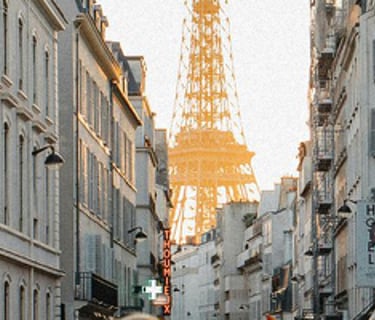The Best Ways to Get Around Paris: A Comprehensive Guide


1. Exploring Paris by Bicycle
Paris has become a bike-friendly city with an extensive network of bicycle lanes and paths. Thanks to the city’s push for sustainable transportation, cycling through Paris is now safer and more accessible than ever.
Bicycle Lanes: Paris boasts over 1,000 kilometers (621 miles) of dedicated bike lanes. Major streets like Rue de Rivoli and Boulevard Saint-Michel have protected bike lanes, offering a safe and scenic ride.
Vélib’ Métropole: The city’s bike-sharing system, Vélib’, has thousands of bicycles, including electric ones, available at docking stations throughout the city. You can pick up a bike at one station and drop it off at another, making it convenient for short trips.
Cycling Tips: Stay aware of traffic, follow local cycling rules, and always use designated bike lanes. A helmet is recommended, though not mandatory.
2. Using the Metro: Paris’ Iconic Underground
The Paris Métro is one of the fastest and most efficient ways to travel across the city. With over 300 stations and 16 lines, it connects every corner of Paris and beyond.
Understanding the Lines: Each metro line is numbered and color-coded, with maps available at every station and online. Key lines for tourists include:
Line 1: Connects major attractions like the Louvre, Place de la Concorde, and the Champs-Élysées.
Line 4: Runs north-south and stops near Notre-Dame and Montmartre.
Line 6: Offers views of the Eiffel Tower.
Tickets and Passes: Purchase a single ticket (T+ ticket) for €2.10 or opt for unlimited travel with a Paris Visite or Navigo pass. Tickets can also be used on buses and trams.
Tips for a Smooth Ride: Avoid peak hours (8–10 AM and 5–7 PM), keep your belongings secure, and familiarize yourself with the metro map before your journey.
3. Buses: Scenic and Convenient
While the metro gets you places quickly, buses offer the added benefit of seeing Paris’ beauty as you travel. With over 60 lines crisscrossing the city, buses are a practical alternative.
Popular Routes for Tourists:
Bus 69: Passes landmarks like the Eiffel Tower, Les Invalides, and the Marais district.
Bus 42: Starts near the Gare du Nord and ends at the Eiffel Tower.
How to Use: Purchase tickets at metro stations or onboard (exact change required). Check real-time schedules with apps like Citymapper or the RATP app.
4. Walking: The Best Way to Soak in the City
Paris is a walker’s paradise, with its compact neighborhoods, historic boulevards, and hidden alleys waiting to be discovered.
Neighborhood Highlights:
Le Marais: Known for its cobblestone streets and trendy boutiques.
Montmartre: Explore the artistic charm of this hilltop area, including the Sacré-Cœur Basilica.
Latin Quarter: Wander through its medieval streets and enjoy a vibrant atmosphere.
Walking Tips: Wear comfortable shoes, carry a bottle of water, and keep an umbrella handy. Don’t rush; Paris is best experienced at a leisurely pace.
5. Combining Transportation Options
The beauty of Paris lies in its interconnected transportation system. Use the metro for longer distances, bikes for mid-range exploration, and walking to immerse yourself in the city’s ambiance. Many visitors find that a combination of these options provides the best experience.
Final Thoughts
Getting around Paris is as much a part of the adventure as visiting its landmarks. Whether you’re cycling along the Seine, zipping through the metro, or strolling the Champs-Élysées, each mode of transport reveals a unique side of the city. So hop on a bike, catch a metro, or simply wander — Paris awaits!
What’s your favorite way to get around Paris? Share your thoughts in the comments below!
